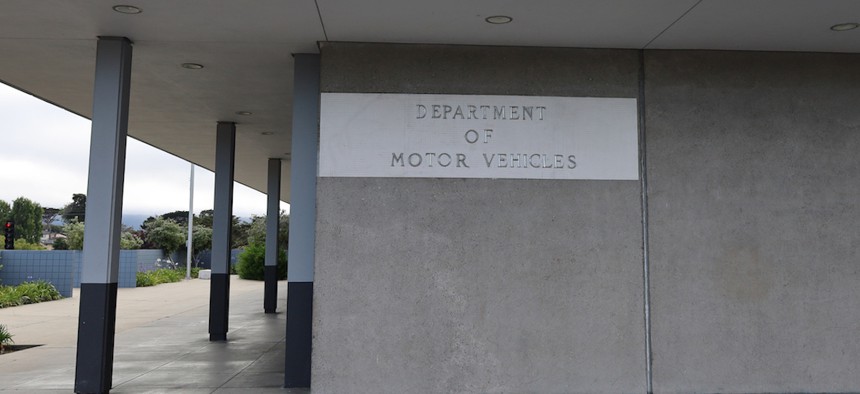Better ID management could help DMVs become ‘departments of citizen engagement’

1lovelucas/Getty Images
Modernizing legacy technology, embracing self service and easing cross-agency authentication can help departments of motor vehicles provide better and more efficient customer experience.
State motor vehicle departments can take advantage of newer technologies to better manage individual identities and become a “department of citizen engagement,” one DMV leader said this week.
While they wrestle with legacy technology and complying with data protection requirements, a DMV can position itself to make identity management easier, said Eric Jorgensen, motor vehicle division director at the Arizona Department of Transportation (ADOT).
For one, DMVs could share the drivers license information they already have on individuals with other agencies so residents do not have to re-enter their information when applying for other state services.
“The nice thing is, DMVs across the country are well positioned to do this because we already possess one of the key components: We know more about an individual than pretty much any other agency in the country,” Jorgensen said during a webinar hosted by face biometric verification and authentication technology company iProov.
Better identity management makes customer service more efficient. ADOT, for example, participates in the state’s Business One Stop initiative, which directs Arizona residents who want to open a business to one website where they can file all the necessary permits and registrations, saving them from having to interact with several agencies and use multiple logins and credentials to fulfill all the state’s requirements.
ADOT’s involvement, Jorgensen said, helped authenticate customers’ identity through drivers’ licenses and other identifying documents. He said that effort ensured that all agencies would have the same information about an individual looking to open a business.
It is a far cry from the late 1990s, when Jorgensen said the motor vehicle division “ended up kind of stagnating,” even as the state embraced online services. The legacy technology led to what they called a “customer anonymous approach,” he said.
“Basically, if you wanted to get an online service with us, you would come in and give us enough information that we could find your record. But every time, it was like you were a brand new customer to us,” Jorgensen said. He added that the systems were not secure and could be exploited by criminals who misused or even breached them.
But now, IT modernization is improving identity management and customer experience at DMVs across the country.
West Virginia recently became the first state to digitize its vehicle titling process and saw waiting times on applications cut from 40 days to around four. And with researchers finding that vehicle services at the DMV is one of the key drivers for how satisfied residents are with their government, the onus is on agencies to do better.
That includes building the ability for DMVs to offer more self-service for customers, albeit with the proviso that some in-person interaction may be necessary to verify identification and documents for certain transactions. Jorgensen likened the strategy to departure zones at airports, where passengers walk up to a kiosk and “get as far as you can” with tasks like checking bags. Then a human with the airline checks the travelers’ ID and ticket then finishes checking them in.
He also said there is promise for mobile driver’s licenses to standardize identity and allow for interoperability between states. Jorgensen said he first heard of similar initiatives over a decade ago, but the use of smart mobile devices for identity verification, if done safely, can help streamline the whole identity verification process for customers.
Jorgensen said the American Association of Motor Vehicle Administrators’ efforts on digital trust service for mobile driver’s licenses is also encouraging for the future of identity management. It will eventually be a standardized repository of public keys that can be used to validate identities across states, he said.
“What makes it exciting is it's based in convenience but also in privacy and also in security,” he said. “It goes back to those principles of selective disclosure: The customer always knows what they're disclosing, and they know—at least allegedly—for what purpose it is being disclosed.”
It is a challenge to modernize DMVs, especially given the financial constraints placed upon them, Jorgensen said. But by using new technologies to improve operations and efficiency, he said there is potential for a new focus on customer experience, especially as the agency is a regular “touch point” for people interacting with the government.
“The concept isn't necessarily to rip out the motor vehicle division and turn it into something new,” Jorgensen said, “but rather a recognition that the old paradigms that we've worked in, the silos of excellence that we've worked in for all these years, maybe it's time for us to think beyond them and understand how we how we interact with others.”






